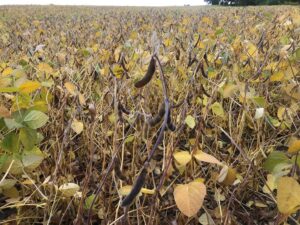EFP – a winning model
ANDREW GRAHAM REFLECTS ON OSCIA’S SUCCESS

ANDREW GRAHAM, LONG-TIME executive director for the Ontario Soil and Crop Improvement Association (OSCIA), retires in June 2023. With 33 years of experience in the organization, eight of which were in the executive role, Graham says he is proud of OSCIA’s longevity, outreach and program delivery model, and particularly its flagship initiative — the Environmental Farm Plan (EFP).
Graham came to OSCIA after beginning his career at Upper Thames River Conservation Authority in London, followed by a stint at the Oxford County office of the Ontario Ministry of Agriculture, Food and Rural Affairs in Woodstock. His initial role with OSCIA involved designing and delivering numerous stewardship education and incentive programs, as well as other special projects for the farm community.
“There have been dozens and dozens of government-funded programs, applied research projects, incentive type programs, since I moved to OSCIA in 1990,” says Graham. “OSCIA was building a tremendous reputation for capacity and ability to deliver programs. The farm community was very accepting of that approach. It brought a lot of credibility and stability.”
“There are always unknowns when delivering government programs as a third party — if it’s going to come through, and what it is going to look like — but we have had significant opportunity over the years to influence program designs both on the educational side and incentive program side.”
SUCCESS OF THE EFP
Graham considers the Environmental Farm Plan program one of OSCIA’s greatest successes.
“I was there when the idea was first being discussed. At the time, we didn’t even know what an EFP would entail. It was the start of quite a journey to figure out what the EFP would be for Ontario. We leaned on a program that was being delivered in Wisconsin at the time called Farm Assist. We got permission to break down their model and built it back up in a way that helped farmers here recognize environmental risks and also present proven methods to address that risk,” says Graham.
“To be still involved 30 years later and see the tremendous success it’s been not only in Ontario but across Canada is extremely rewarding.”
INTERNATIONAL RECOGNITION
Recognition of the EFP’s value has come from very far afield. Graham and OSCIA colleagues frequently hosted delegations from, among many other places, Indonesia, New Zealand, and the Nunavut territory. While the application of technical details may not have been relevant to each visiting party, the structure of the EFP – and specifically, how it was employed as a vehicle of knowledge transfer — proved valuable.
“It’s always impressive to host groups from countries you would least expect. It wasn’t the technical information in the book, it was the adult education system they were interested in – the idea of assembling a system that would empower their farmers,” he says.
Delegates from Nunavut, for example, thought the EFP format would be valuable in identifying specific risks in the area and putting into practice tactics that would reduce those risks.
GOING FORWARD
Graham says the need for continued research and comprehensive reviews of the EFP itself is also important.
“A lot has changed in 30 years. There are changes in regulation, new ideas, technologies, and issues that weren’t being discussed when the current fourth edition was being rolled out, which was 10 years ago. It needs to have a thorough review, and we hope there will be an opportunity for other organizations to be consulted to determine their needs, desires and opinions.”
BY THE NUMBERS
Since the EFP was introduced in 1993, it is estimated that more than 75 per cent of Ontario farm businesses have participated at one time or another. Many have come through the door of workshops more than once to keep their plan updated. By 2021, several tens of thousands of Ontario farm businesses had voluntarily participated in over 3,750 educational workshops delivered by OSCIA workshop leaders.
Records reveal OSCIA has administered well over $265 million in cost-share incentives to farm businesses over the years through a variety of programs. Most of these government funds have been invested in environmental improvements.
Source: Ontario Soil and Crop Improvement Association. •




















